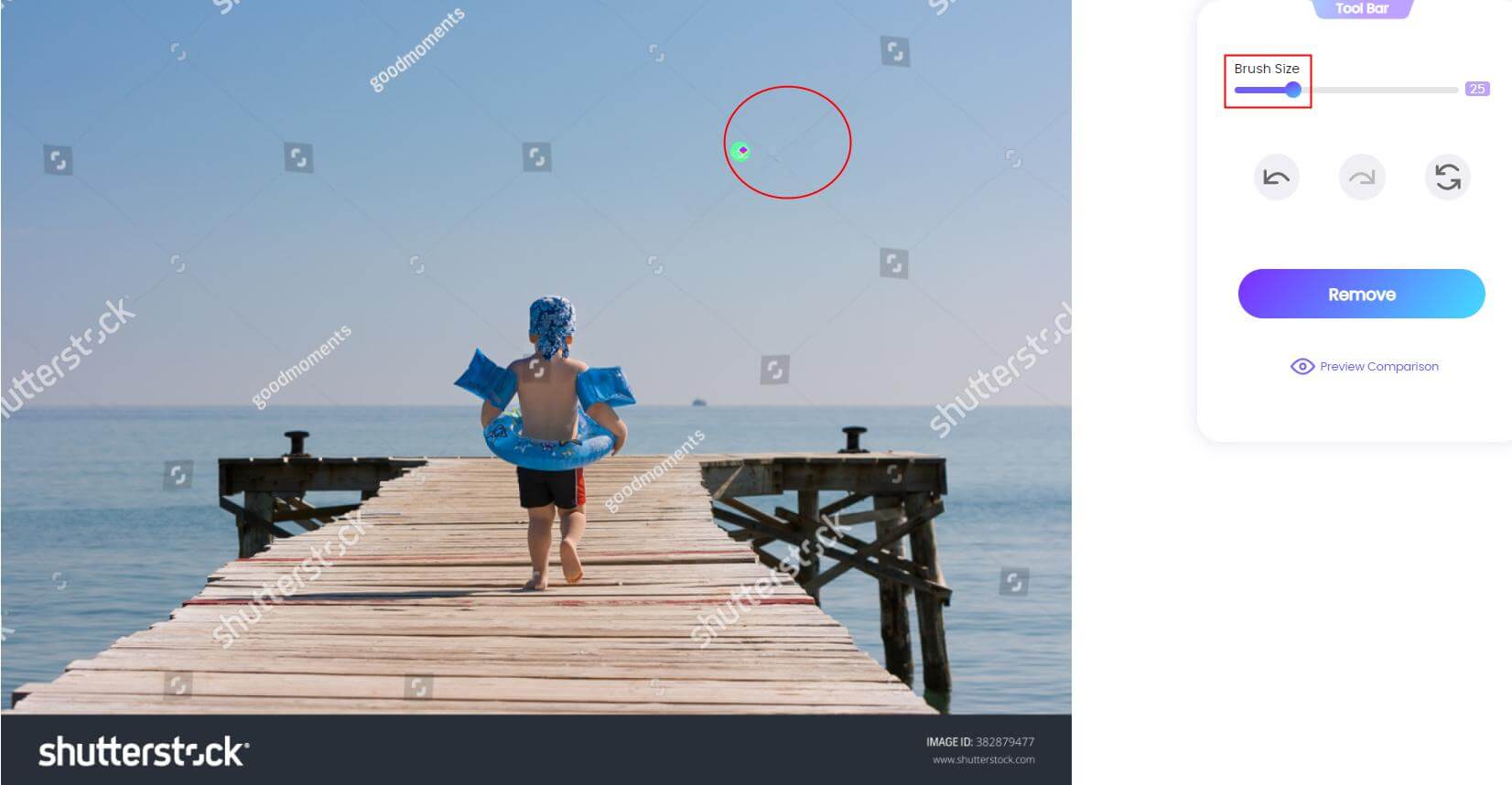The Importance of Shutterstock Watermarks
Shutterstock watermarks play a crucial role in protecting the intellectual property rights of content creators and the business model of the platform. These watermarks are essential for several reasons:
- Deter Copyright Infringement: Watermarks act as a visual deterrent to potential copyright violators. They make it clear that the image is protected and cannot be used without proper licensing.
- Preserve Image Quality: Shutterstock watermarks ensure that the high-quality, full-resolution versions of images are only accessible to paying customers. This prevents the free distribution of unlicensed, high-resolution content.
- Support Content Creators: By discouraging unauthorized use of images, Shutterstock watermarks help content creators receive fair compensation for their work. This support is vital for artists, photographers, and designers.
- Legal Protection: In cases of copyright infringement, the presence of watermarks can be used as evidence in legal proceedings. They demonstrate the intent to protect intellectual property.
Overall, the importance of Shutterstock watermarks cannot be overstated. They serve as a shield against unauthorized usage, safeguard image quality, and foster a fair and sustainable ecosystem for both content creators and consumers.
Also Read This: Removing Adobe Stock Watermark: An Easy Guide for Removing Watermarks
Understanding the Elements of a Watermark

Shutterstock watermarks are carefully designed to convey essential information and protect the content they overlay. To decode these watermarks, it's crucial to understand the various elements they consist of:
- Shutterstock Logo: The most prominent element in a Shutterstock watermark is the company's logo. This logo reinforces the source of the image and acts as a constant reminder of its copyright status.
- Transparency: Watermarks are typically translucent to ensure they don't obscure the image's subject matter entirely. This allows users to evaluate the image's content while still recognizing its protected status.
- Text Overlay: Watermarks often include text, which may contain information like the photographer's or creator's name, image ID, or copyright details. This text provides a quick reference for licensing and attribution.
- Patterns and Lines: Some watermarks feature intricate patterns or lines that make it challenging to remove or alter them without leaving visible traces. These patterns add an extra layer of protection to the image.
Understanding the components is just the first step. The following table provides an overview of the typical elements in a Shutterstock watermark:
| Element | Description |
|---|---|
| Shutterstock Logo | The recognizable Shutterstock logo, often placed prominently in the watermark. |
| Transparency | The watermark's translucent quality, allowing the underlying image to show through. |
| Text Overlay | Text that may include copyright information, image ID, and creator details. |
| Patterns and Lines | Intricate designs or lines within the watermark to deter tampering. |
These elements work together to achieve the watermark's primary goals: protecting intellectual property and deterring unauthorized use. Removing or altering any of these elements can be challenging, as doing so would risk the image's integrity and the legal consequences of copyright infringement.
For content creators, the watermark serves as a visual signature, helping them receive proper attribution and compensation for their work. To the end user, it's a reminder of the need to respect copyright and licensing agreements, promoting ethical and legal image usage.
Also Read This: Visual Freedom: Adobe Stock Free Download Without Watermark
Challenges in Removing Watermarks

Removing watermarks from Shutterstock images is a controversial and legally questionable practice. While some individuals attempt to remove watermarks for various reasons, they encounter several significant challenges and obstacles:
- Image Quality Loss: Removing a watermark often involves altering the image, which can lead to a reduction in image quality. This loss of quality can make the image less appealing for professional or commercial use.
- Legal Implications: Unauthorized removal of watermarks constitutes copyright infringement, and it can lead to legal action. Shutterstock vigorously protects its content and copyright, and infringers may face lawsuits and fines.
- Ethical Concerns: Removing watermarks is considered unethical in the creative and photography industries. It devalues the work of content creators and undermines the licensing model that supports their livelihoods.
- Complex Watermark Designs: Shutterstock employs advanced watermarking techniques that make removal difficult. Complex patterns, overlapping layers, and transparency can all present obstacles to those attempting removal.
- Detection Software: Shutterstock and other stock image platforms use sophisticated software to detect unauthorized usage of their images. This software can track where and how images are used, making it easier to identify and pursue infringers.
For a clearer overview of the challenges in removing watermarks, the following table outlines the major obstacles:
| Challenge | Description |
|---|---|
| Image Quality Loss | Removing watermarks can result in a reduction of image quality, making it less suitable for professional use. |
| Legal Implications | Unauthorized removal of watermarks can lead to copyright infringement and potential legal action. |
| Ethical Concerns | Removing watermarks is considered unethical and devalues the work of content creators. |
| Complex Watermark Designs | Shutterstock employs intricate watermark designs that pose challenges to removal. |
| Detection Software | Sophisticated software is used to detect unauthorized image usage, making it easier to identify and pursue infringers. |
These challenges, both practical and legal, serve as strong deterrents against the unauthorized removal of watermarks from Shutterstock images. It is essential to respect the intellectual property rights of content creators and adhere to legal and ethical guidelines when using stock images.
Also Read This: A Step-by-Step Guide for Photographers: How to Successfully Sell on Alamy
Tools and Techniques for Decoding Watermarks
Decoding watermarks is a practice that's generally discouraged due to ethical and legal considerations. However, understanding the methods that can be used to analyze watermarks can be beneficial for legitimate purposes such as image authentication and forensics. Here are some of the tools and techniques used for decoding watermarks:
- Image Processing Software: Specialized image processing software, like Adobe Photoshop and GIMP, can be employed to enhance the visibility of watermark details. Techniques such as contrast adjustment, sharpening, and noise reduction can help bring out obscured watermark information.
- Steganography Analysis: Steganography is the science of hiding information within other data. Researchers and analysts can use steganography analysis tools to detect hidden watermarks by examining image files for unusual patterns and inconsistencies.
- Frequency Analysis: Watermarks are often embedded using specific frequencies or patterns. Frequency analysis tools can help identify these patterns within the image data, revealing the presence of a watermark.
- Metadata Examination: Image metadata, including EXIF data, may contain information related to the watermark, such as the software or parameters used in the watermarking process. Analyzing this metadata can offer insights into the watermark's origin.
- Reverse Engineering: In some cases, experts may attempt to reverse engineer the watermarking process itself. This involves studying known watermarking techniques to understand how to decode them.
For a more detailed overview, here's a table summarizing the tools and techniques for decoding watermarks:
| Tool/Technique | Description |
|---|---|
| Image Processing Software | Specialized software for enhancing watermark visibility by adjusting image contrast, sharpness, and reducing noise. |
| Steganography Analysis | Tools that detect hidden watermarks by examining image files for unusual patterns and inconsistencies. |
| Frequency Analysis | Methods for identifying watermark patterns embedded using specific frequencies or patterns. |
| Metadata Examination | Analysis of image metadata, including EXIF data, for information related to the watermark and its origin. |
| Reverse Engineering | Studying known watermarking techniques to understand how to decode them. |
It's essential to note that these tools and techniques should be used responsibly and within the boundaries of legal and ethical considerations. Unauthorized decoding and removal of watermarks can lead to legal consequences and should be avoided to protect the rights of content creators and the integrity of digital content.
Also Read This: Closing Time: Guide to Closing Your Shopify Store
FAQs
Here are some frequently asked questions regarding Shutterstock watermarks and their use:
What is the purpose of a Shutterstock watermark?
Shutterstock watermarks are used to protect the intellectual property rights of content creators. They serve as a visual indicator that the image is copyrighted and cannot be used without proper licensing.
Can I remove a Shutterstock watermark from an image?
Removing a Shutterstock watermark is considered unethical and often illegal, as it constitutes copyright infringement. It is essential to respect copyright and licensing agreements.
How do watermarks affect image quality?
Watermarks are designed to be transparent, allowing the underlying image to show through. However, altering or removing watermarks can result in image quality loss, making the image less suitable for professional or commercial use.
What tools are used to decode Shutterstock watermarks?
Decoding watermarks is generally discouraged, but some tools and techniques for analysis include image processing software, steganography analysis, frequency analysis, metadata examination, and, in some cases, reverse engineering.
Are there legal consequences for watermark removal?
Yes, there can be legal consequences for unauthorized watermark removal. Shutterstock and other stock image platforms take copyright infringement seriously and may pursue legal action against those who remove watermarks without proper licensing.
Why is it important to respect watermarks and copyrights?
Respecting watermarks and copyrights is crucial to supporting content creators and maintaining the integrity of digital content. It ensures that creators receive fair compensation for their work and fosters an ethical and sustainable ecosystem for image licensing and usage.
It's essential to remember that watermarks are in place to protect the rights of content creators and to promote ethical and legal image usage. Always consider the terms and conditions of use when working with watermarked images and respect the copyright and licensing agreements set by the content owners.
Also Read This: How to Earn Money on Flickr – Easy Ways
Protecting Your Images with Watermarks
Watermarks aren't just tools for stock image platforms; they can also be utilized by content creators to protect their own images. Here's how you can use watermarks to safeguard your content:
1. Prominent Watermark Placement: When adding a watermark to your images, ensure it's placed prominently without obstructing the central subject. This makes it more challenging for potential infringers to crop or edit out the watermark while keeping the image's visual appeal.
2. Consistent Branding: Use your watermark as a form of consistent branding. Include your name, logo, or website in the watermark to establish your identity as the creator. This helps with recognition and attribution.
3. Custom Watermark Design: Create a unique and visually appealing watermark design that enhances your image rather than detracting from it. A custom design can make it more difficult for others to replicate or remove the watermark.
4. Digital Signatures: Some watermarking tools allow you to include digital signatures within your watermark. This adds an extra layer of protection and authenticity to your images.
5. Licensing Information: Consider including licensing information in your watermark, such as "All Rights Reserved" or "Creative Commons." This informs viewers of the image's usage rights and can deter potential infringers.
6. Metadata and Copyright Tags: Alongside your watermark, embed relevant metadata and copyright information within your image files. This information can serve as an additional layer of protection and can be accessed by those viewing the image.
7. Monitoring and Tracking: Regularly monitor where your images are being used online. You can use reverse image search tools to track down unauthorized usage and take appropriate action to enforce your rights.
8. Register Your Copyright: In some jurisdictions, registering your copyright can provide you with additional legal protection. Consult with a legal professional to understand the copyright registration process in your area.
By implementing these strategies, you can effectively protect your images and intellectual property rights. Remember that while watermarks are essential for safeguarding your content, they should strike a balance between protection and maintaining the visual appeal and usability of your images.
Conclusion
In conclusion, understanding and respecting watermarks is paramount in the digital world where image theft and copyright infringement are prevalent issues. Shutterstock watermarks, like those on many stock image platforms, serve vital roles in protecting intellectual property rights and ensuring fair compensation for content creators.
Decoding or removing watermarks is generally discouraged due to the legal and ethical implications involved. While some tools and techniques exist for watermark analysis, their use should be strictly limited to legitimate purposes such as image authentication or forensics.
By embracing responsible image usage and licensing, we can foster an ecosystem where creativity is respected and rewarded. Content creators rely on these systems to make a living, and the consistent use of watermarks helps maintain the integrity of digital content.
For content creators, watermarks can also serve as a means of self-protection, helping to ensure proper attribution and recognition of their work. When used effectively, watermarks become a valuable component of branding and image identity.
As you navigate the world of digital content, it's essential to remember that watermarks are more than just marks on images; they are symbols of the creative and intellectual effort that goes into producing visual content. Respect for these symbols is a fundamental aspect of maintaining a just and ethical digital landscape.












